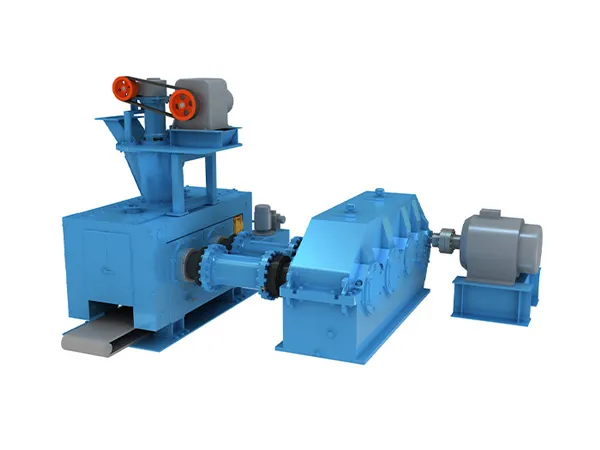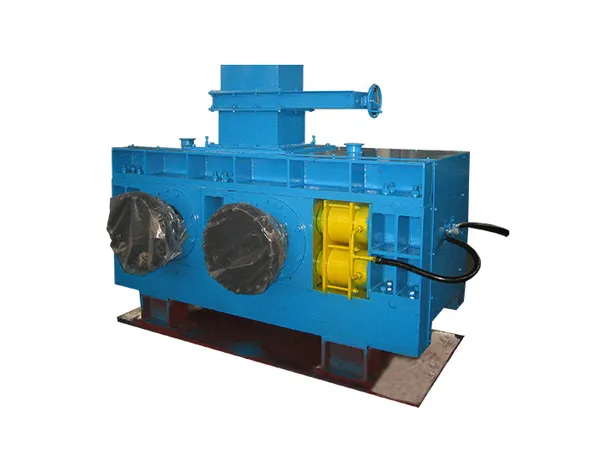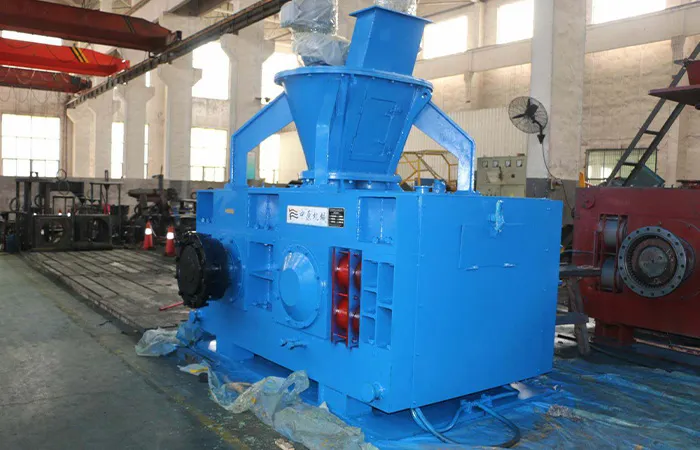

-
Products
-
Application


The treatment of converter dust ash using a high pressure briquetting machine is a specialized process aimed at transforming the fine, often problematic, dust into a more usable and environmentally friendly material.

As we've established, the core function of a high-pressure briquetting machine is to compress a prepared mixture into solid, shaped briquettes. Here's a step-by-step breakdown of the process as it occurs within the machine:
Feeding/Hopper:
Material Infeed: The pre-treated converter dust ash mixture, which includes the dust, possibly binders, fluxes, and adjusted moisture, is fed into the machine's hopper or inlet.
Controlled Flow: The hopper design and any integrated feeders (screw feeders, vibratory feeders) ensure a consistent and metered flow of material into the briquetting zone. This control is crucial for uniform briquette formation.
Pre-Compression (Optional):
Pre-compacting Zone: Some machines feature a pre-compression zone, often employing a screw or other mechanism to lightly compact the material before it reaches the main compression area. This helps to remove air and prepare the material for the high-pressure stage.
Benefits: This step can improve briquette density and reduce the amount of material that might be pushed out from the sides during the main compression.
The Compression Zone:
Counter-Rotating Rollers: The heart of the machine consists of two (or sometimes more) heavy-duty, counter-rotating rollers. These rollers have precisely machined pockets (or ball nests) on their surfaces.
Material Intake: As the rollers rotate, the material from the hopper is drawn into the space between them.
Pressure Buildup: As the material moves further between the rollers, the converging shape of the pockets causes the material to be subjected to increasing pressure. This pressure compacts the fine dust particles together, creating a solid briquette.
Forming and Shaping: The shape and size of the pockets determine the final shape and size of the formed briquettes.
Peak Pressure: The greatest compression occurs when the two roller pockets are aligned directly opposite one another. At this point, the highest level of pressure is exerted, forming the most dense and strongest briquette.
Mechanical Interlocking and Bonding: The high pressure causes the dust particles to interlock mechanically. If binders are present, they are also activated at this stage, further bonding the particles together.
Release and Ejection:
Roller Separation: As the rollers continue to rotate, the pockets begin to separate, relieving the pressure on the briquette.
Briquet Release: The formed briquette is then released from the roller pocket. Some machines have mechanical or pneumatic ejection mechanisms to ensure the briquettes are properly removed.
Discharge: The briquettes drop out of the machine's discharge chute.
Machine Components:
Heavy-Duty Frame: The machine has a robust frame to withstand the high forces exerted during the briquetting process.
Roller Housings and Bearings: The rollers are mounted on heavy-duty housings and bearings to ensure precise alignment and smooth rotation under high pressure.
Drive System: A powerful motor and gearbox system are used to drive the rollers. The drive system must be capable of providing the torque necessary to compress the material.
Hydraulic or Mechanical Pressure Adjustment: Most machines have hydraulic or mechanical systems that allow for adjustment of the pressure applied by the rollers. This is essential for fine-tuning the machine for different types of dust and binder combinations.
Safety Features: Interlocks, emergency stops, and guarding are in place for operator safety.
Lubrication System: Automated or manual lubrication systems ensure that critical parts of the machine are properly lubricated to reduce wear and maintain smooth operation.
Cooling System (Optional): For very high-throughput operations, a cooling system for the rollers and other parts may be necessary.

Roller Profile Design: The shape, size, and depth of the pockets on the rollers are critical for the briquette shape and quality. Different roller profiles may be used depending on the desired outcome and material being processed.
Material Flow Control: Uniform and consistent material flow is essential to ensure consistent briquette production.
Pressure Settings: The pressure applied by the rollers needs to be precisely controlled to ensure good briquette density and strength without damaging the rollers or machine.
Temperature Management: Temperature control may be necessary to maintain binder reactivity and prevent overheating.
Wear Protection: The machine is subject to abrasion and wear from the material and high forces. Wear-resistant materials and coatings are often used for parts exposed to wear.
Cleaning and Maintenance: Regular cleaning and maintenance are crucial to prevent material buildup, ensure efficient operation, and prolong the life of the machine.

The treatment process within the high-pressure briquetting machine involves:
Controlled Feeding: The prepared dust mix enters the machine.
Optional Pre-Compression: A preliminary compaction may take place.
High-Pressure Compression: The material is compressed between counter-rotating rollers with pocket profiles.
Briquette Formation: High pressure forces the dust into a solid shape, activating binders if present.
Release and Ejection: Formed briquettes are released and discharged from the machine.
The high-pressure briquetting machine is a complex piece of machinery requiring precise design and operation to efficiently transform fine, powdery converter dust ash into solid, usable briquettes. The process inside the machine involves controlled material flow, high compression forces, and careful management of key parameters to produce a quality final product.

Official Agent of ZY MINING in Russia.
Please enter here.
Add: Luoxin Industrial Zone,Luoyang City,Henan Province P.R.C.
Tel: +86-379-67313306
E-mail: gloria@zyksjx.com